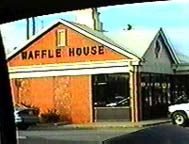
This is starting to creep me out just a little. A LOT of people (including my mom) lately have commented that I seemed to have lost a lot of weight. I figured they were just being polite. Then I went out to the corner queer bar last night and ran into a frind I hadn’t seen in a few months. He said the same thing, worrying, even, that there might be some health issue involved (the standard San Francisco reaction to weight loss).
Frankly, I think I’m as much of a lard-ass as ever, although I realized last night that I no longer own scales so I can’t really tell. God knows I still eat as horribly as ever, although I have been eating at home more lately, which does usually mean more vegetables. I haven’t been eating quite as much fast food, and I’ve just about sworn off booze. But I’m still quite sedentary, perhaps even more so than I used to be.
It’s a little difficult to figure out the truth here. Friends who see me every day or every week probably wouldn’t notice, and it’s not easy to arrange chance encounters with long-lost friends.
Now that I think about it, though, my pants aren’t feeling quite so tight today and my gut may not look quite so prominent. If I have lost a lot of weight, I’m glad, because I really needed to. But it sure would be nice to know how I did it, since I haven’t really been doing anything much differently than before. September and October were pretty rough months, though. Maybe I just sweated it off…
So now I’m contemplating losing still more weight, having a check-up (just in case), and selling my secrets to the world, as soon as I figure out what they are.
***
A little later same day. My friend Paula had the same “you’ve lost weight” opinion today as we headed for the thrift stores in Redwood City. I guess I believe it now…
